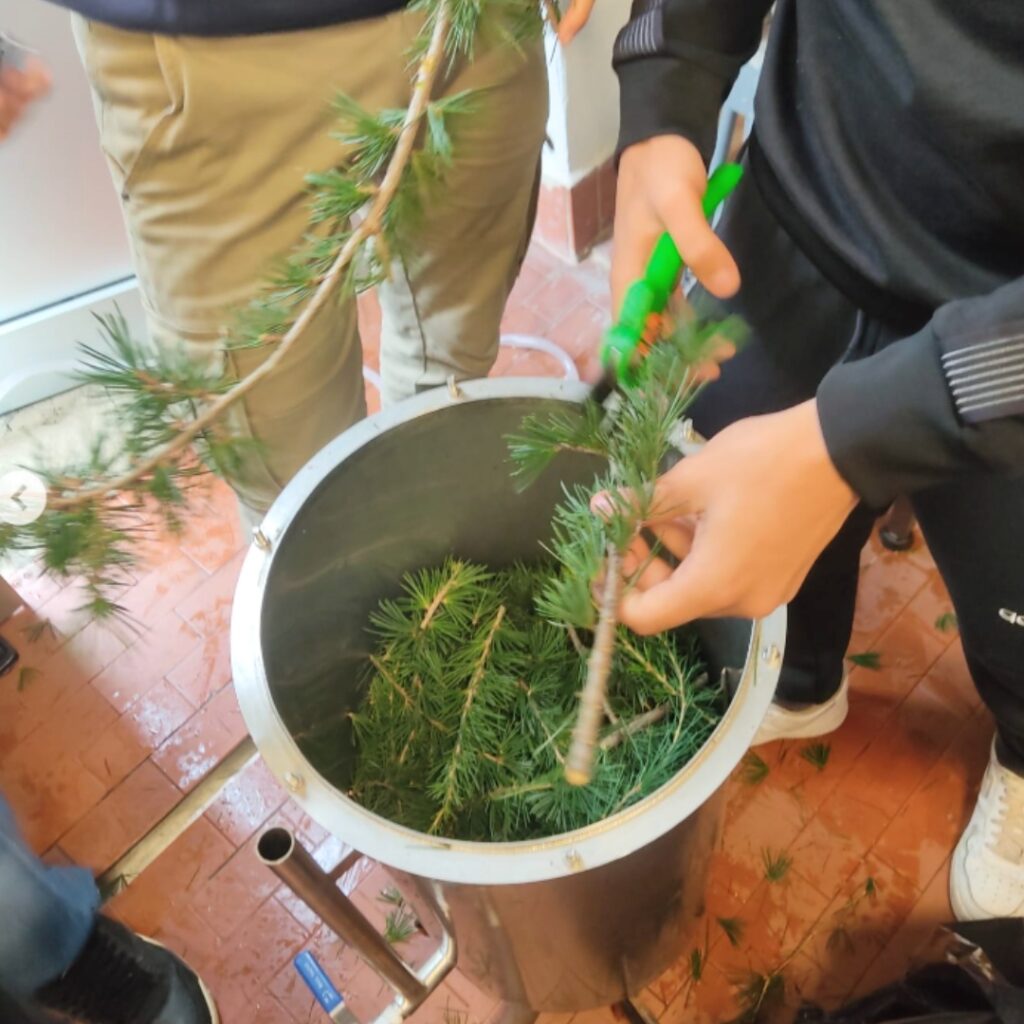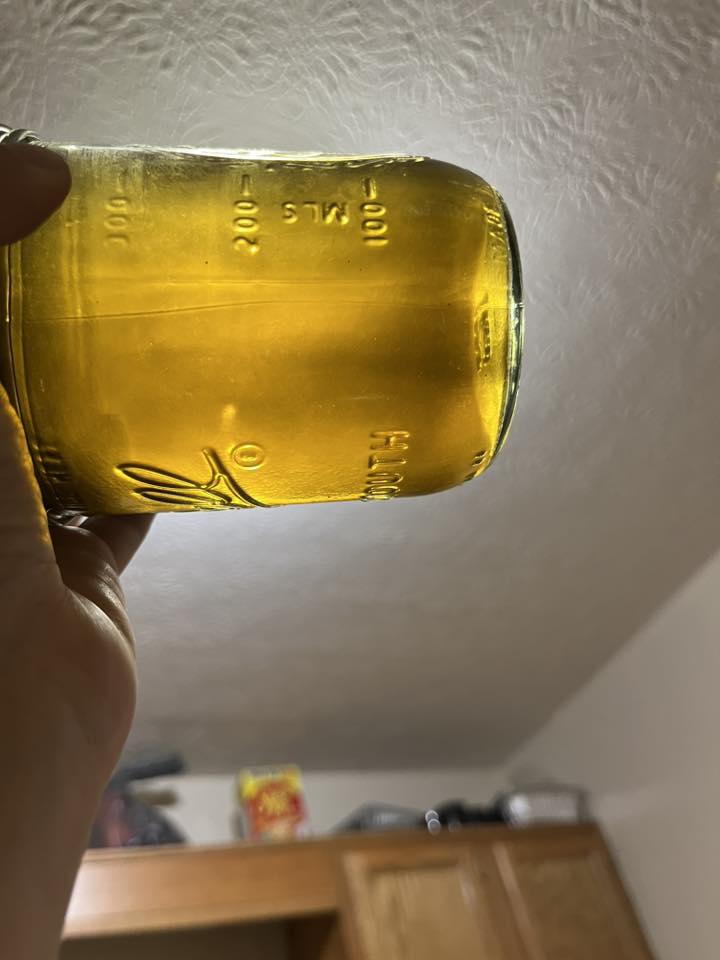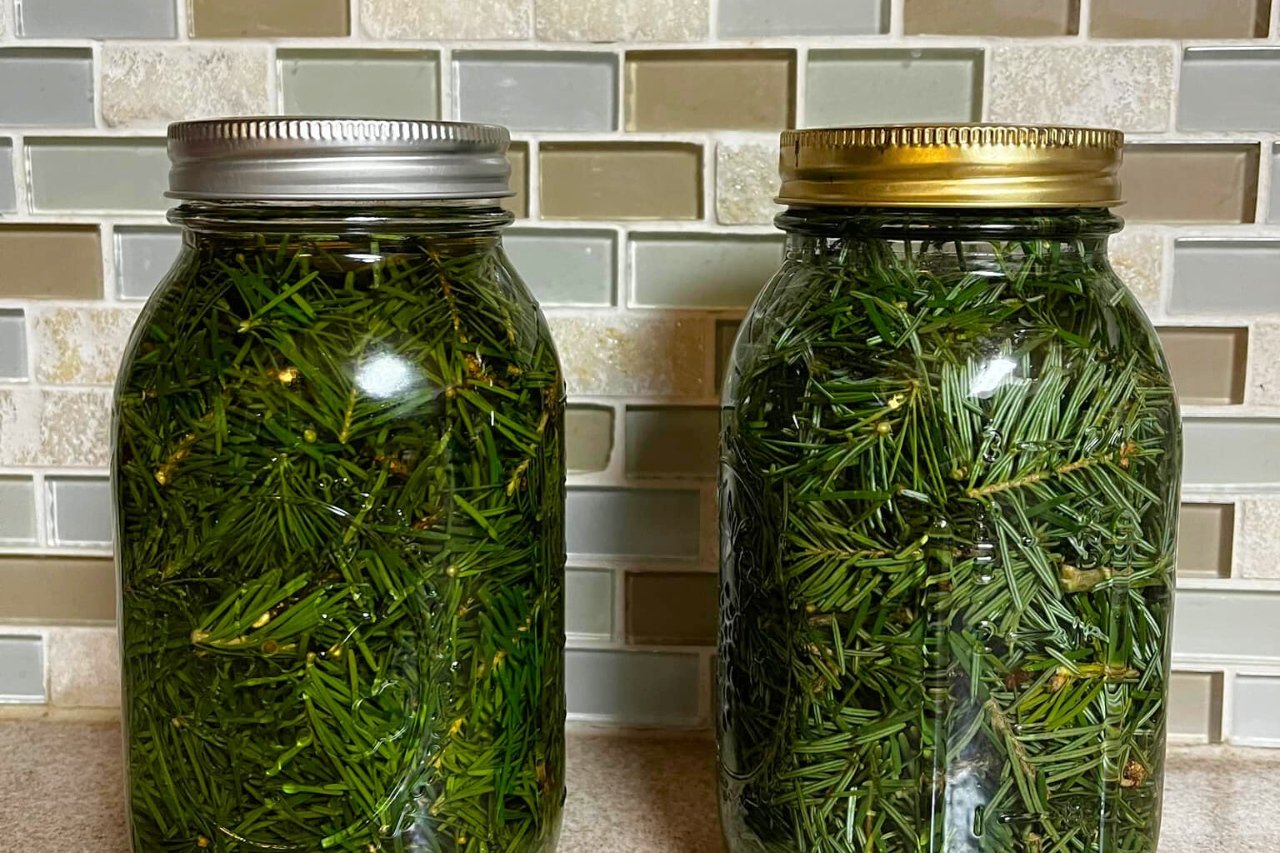Much of what I know about gardening I owe to Nonna. But there’s one more special skill she taught me: how to make pine needle oil.
It’s easy, inexpensive, and something you can do right in your kitchen, with items you probably already have.
I remember gathering fallen pine branches on my grandparents’ farm in Italy. I’d watch Nonna turn the needles into a jar of oil that honestly smelled like mountain air. Some of my fondest childhood memories!
Now, let me show you exactly how my Nonna made this oil, plus all the incredible ways you can use it.
What’s in Pine Needle Oil?

That fresh pine scent comes from aromatic compounds called terpenes. Coniferous trees produce these terpenes to defend against pests and diseases.
The same compounds are also what give the oil its refreshing and therapeutic properties.
If you crush pine needles between your fingers, you can already catch that first sharp burst of aroma. That’s the essential oils being released.
Pine oil is rich in vitamin C, flavonoids, and amino acids, giving it antioxidant, antimicrobial, and anti-inflammatory benefits.
It can also ease minor aches and even lift your mood. Around the house, you can use it as a natural air purifier, insect repellent, and cleanser additive.
How to Make Pine Needle Oil
There are several ways to extract pine needle oil: steam distillation, solvent extraction, and supercritical fluid extraction. Don’t worry; we’re not doing any of those complicated things here.
Today, we’re simply making infused pine needle oil. It’s much simpler and completely doable at home.
It does take a bit of patience, but once you smell the finished product, you’ll probably end up making it every winter, especially if you have pine trees nearby.
Here’s what you’ll need:
- Pine needles
- Mild carrier oil
- A clean lidded glass jar
- A dark glass bottle for storage
- Any clean stirrer
- A strainer
Step 1: Prepare Your Pine Needles
Collect young, green needles; they’re the most fragrant and oil-rich. Pull or cut them from the branches and arrange them in a strainer.
Rinse the needles under cool running water to remove dust, then let them dry completely.
Once dry, pack them loosely into your clean jar until it’s about two-thirds full.
Step 3: Add the Carrier Oil
Pour your favorite carrier oil over the pine needles until they’re completely covered. My go-tos are jojoba oil, olive oil, and sweet almond oil.
Be sure to leave about an inch of space at the top to allow for shaking. Gently stir the mixture using a clean stick or fork, then seal the jar tightly.
Step 4: Wait!
Place your jar of pine needles in a cool, dark place for about a month.
Every couple of days, give it a little shake to help the infusion along.
If everything is working right, you should watch the oil deepen in color each time.
Step 5: Strain and Store

After a month, strain out the pine needles and discard them.
Transfer the infused oil to a dark glass bottle and store it in your kitchen cupboard or pantry.
If stored properly, your pine needle oil should last up to six months.
How to Use Pine Needle Oil
Here are a few of my favorite ways to use it.
Natural Air Freshener
Pine oil is probably most popular for aromatherapy and it’s also one of my favorite uses.
Just run your diffuser with 3–5 drops to freshen any room. I also add a drop or two with my furniture polish or surface cleanser to spread the scent throughout my apartment.
As a Massage Oil
Warm a few drops between your palms and massage them onto your skin.
Pine oil really soothes my tired muscles after a day of gardening or working on the computer. Even better if someone else gives you the massage 😉
In the Bath
You can also add a good spoonful of pine oil to warm bathwater, along with a cup of Epsom salt as a dispersant.
Unfortunately, I don’t have a bathtub in my new house, but I always used to do it, and it was amazing.
As a Natural Chest Rub
It can also be very useful in winter when you need to clear a stuffy nose.
Just moisten a cotton ball with a few drops and inhale the aroma.
You can also mix a few drops of pine oil with eucalyptus or peppermint oil and rub it on your chest.
A Few Extra Tips
Just a reminder: Always check with your doctor first if you’re planning on using pine needle oil for health purposes.
Pine needle oil is a wonderful product, with a long history of traditional use and some modern research. That said, it’s an oil, not medicine.
It’s also pretty potent. If it’s your first time using pine oil on your skin, patch-test the inside of your wrist.

